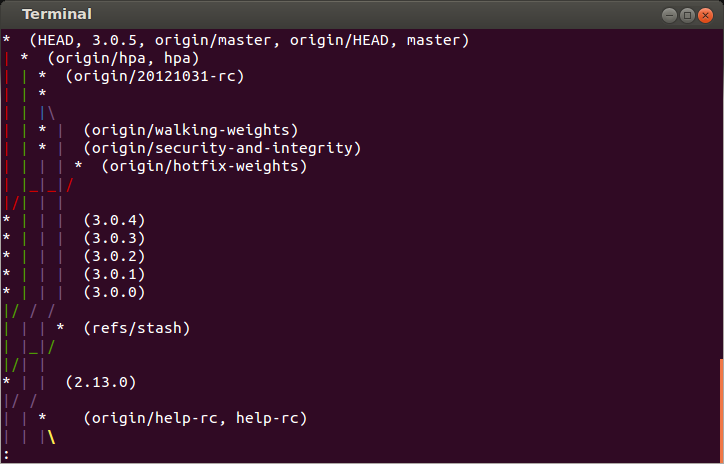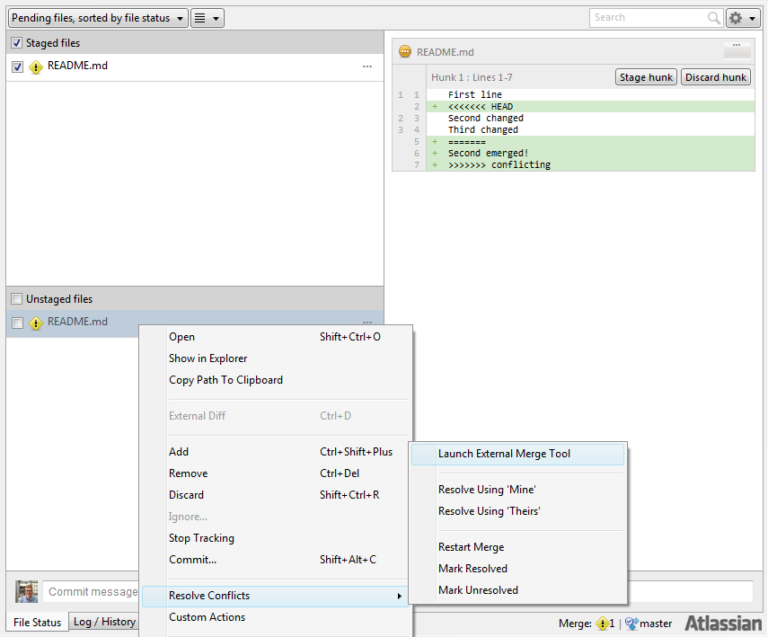

Now, whenever a conflict resolution is needed, you can run SemanticMerge as follows: The command used to configure the tool was:Ĭ:\Users\pablo\AppData\Local\semanticmerge\semanticmergetool.exe -s %theirs -d %mine -b %base -r %merged This will show up the merge tool configuration dialog as follows: Merge tool configurationįirst, go to the Preferences dialog. Once it is configured the list with all available tools, it will look like the following:Īnd now, if you run diff from Tortoise Git, the SemanticDiff will show up. You will, obviously, have to replace the path with the right one where the semanticmergetool.exe is located in your computer. Important note: We used the C:/Users/pablo/AppData/Local/semanticmerge/ path for SemanticMerge. gitconfig file with SemanticMerge configured is:Ĭmd = C:/Users/pablo/AppData/Local/semanticmerge/semanticmergetool.exe -d \"$LOCAL\" -s \"$REMOTE\" -b \"$BASE\" -r \"$MERGED\" In Windows, it will normally be inside your user directory ( c:\users\pablo in my case)). The final result is equivalent to running the commands, but you might prefer to edit the. Check the Configuring external text diff and merge tools section for more information. You can configure SemanticMerge to use any external tool you want. (called Xmerge) to compare the bodies of elements and text blocks and merge them. Text merge and diff: By using this configuration, SemanticMerge will use the included text based diff and merge tool $MERGED - The file where the merge result will be written.Git calculates the right common ancestor (or base) using its internal merge algorithms and does a good job (although our own Plastic SCM does even a

$BASE - The common ancestor of the two files."destination" is the name we use internally, that's why the param is -d).


Xmerge) to compare the bodies of elements and text blocks. Text diff: Using this configuration, SemanticMerge will use the included text based diff tool (called We enclose $REMOTE and $LOCAL (git params) in quotation marks to make sure the command is correctly invoked even if the paths contain spaces. Run the following command to get help about the available params: Whenever you run the semanticmergetool with only two params (left and right of the diff), it will work as a diff tool. Semanticmergetool.exe -s $LOCAL -d $REMOTE To invoke SemanticMerge as a diff tool, we're using the following command line: gitconfig file (except the part that I added for completeness):Ĭmd = C:/Users/pablo/AppData/Local/semanticmerge/semanticmergetool.exe -s \"$LOCAL\" -d \"$REMOTE\" Git config -global "C:/Users/pablo/AppData/Local/semanticmerge/semanticmergetool.exe -s \"$LOCAL\" -d \"$REMOTE\"" Git config -global diff.tool semanticdiff In order to configure SemanticMerge we will run the following commands: Configure diff: Configure it by using the git config commands.Configuring SemanticMerge to be used as diff and merge tools for Git is rather simple.


 0 kommentar(er)
0 kommentar(er)
